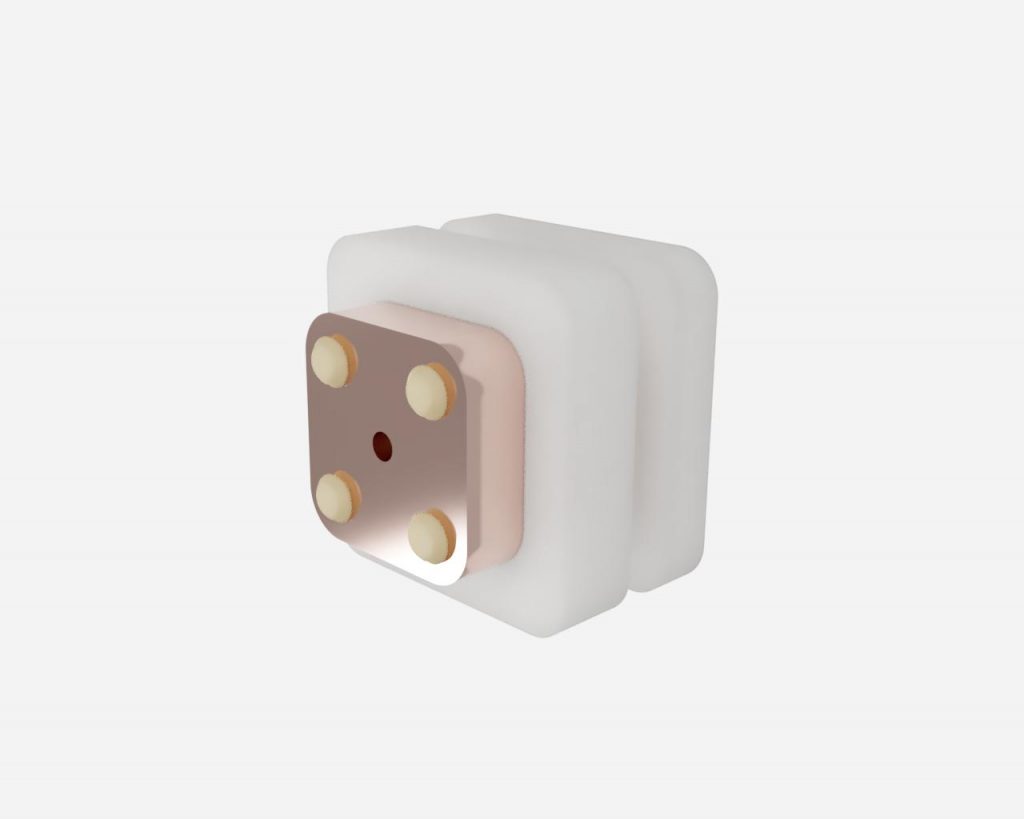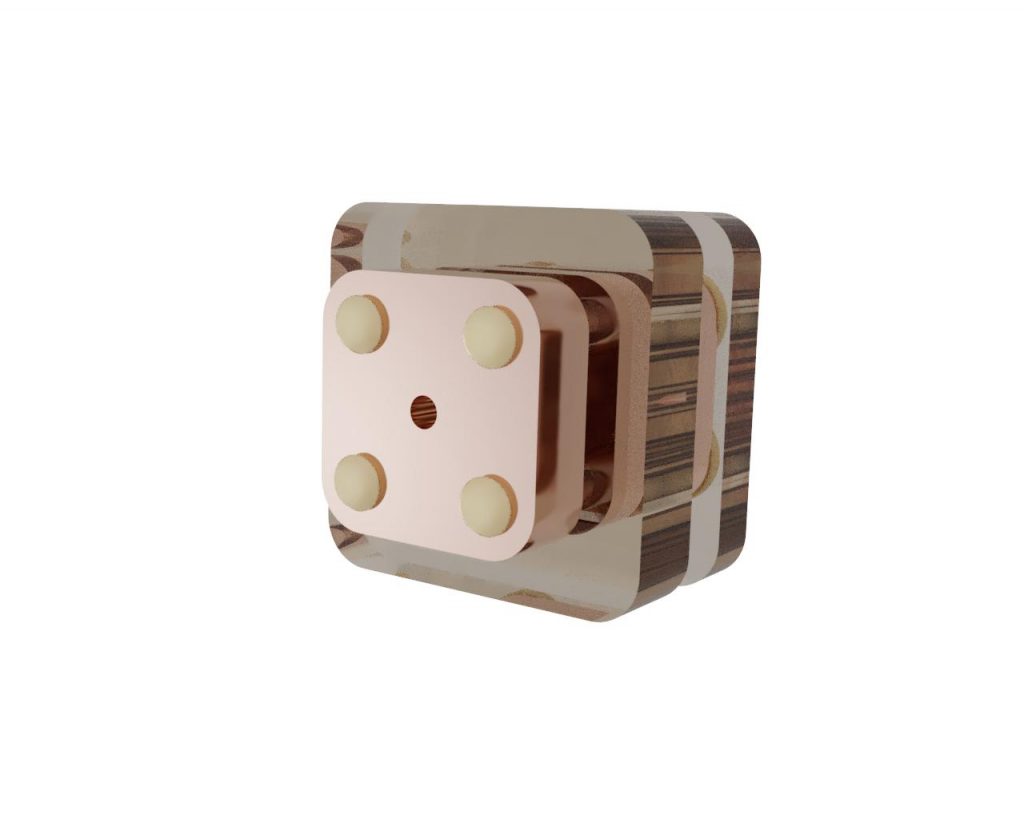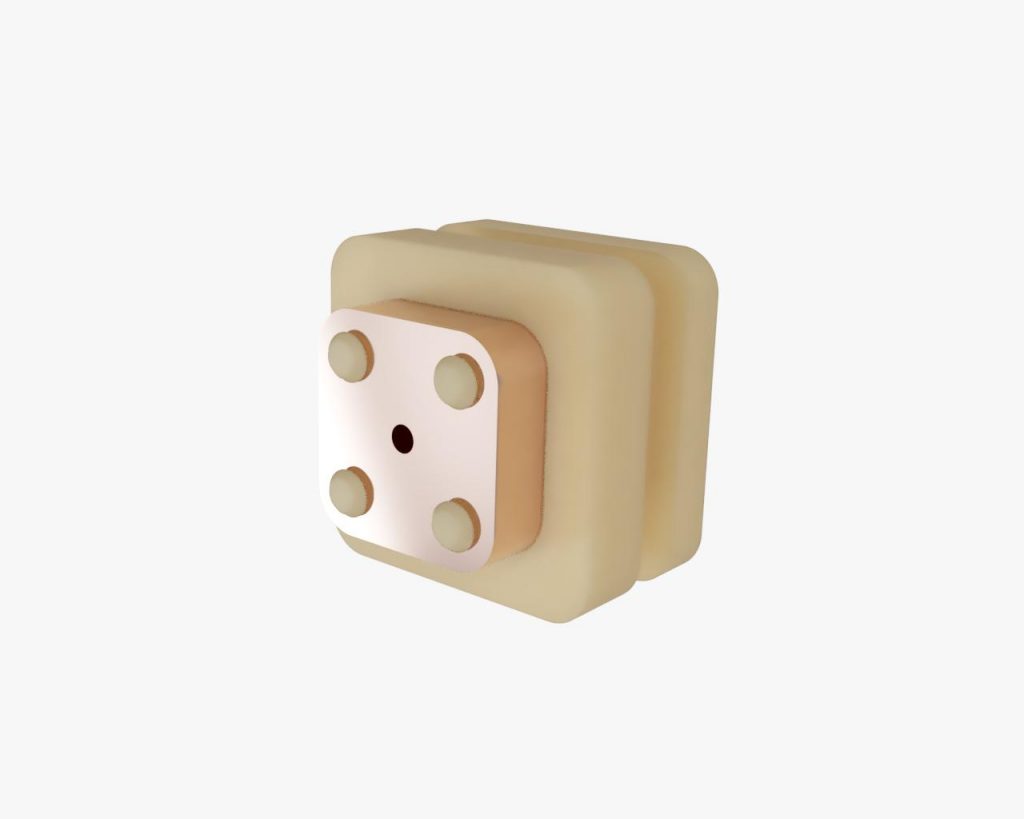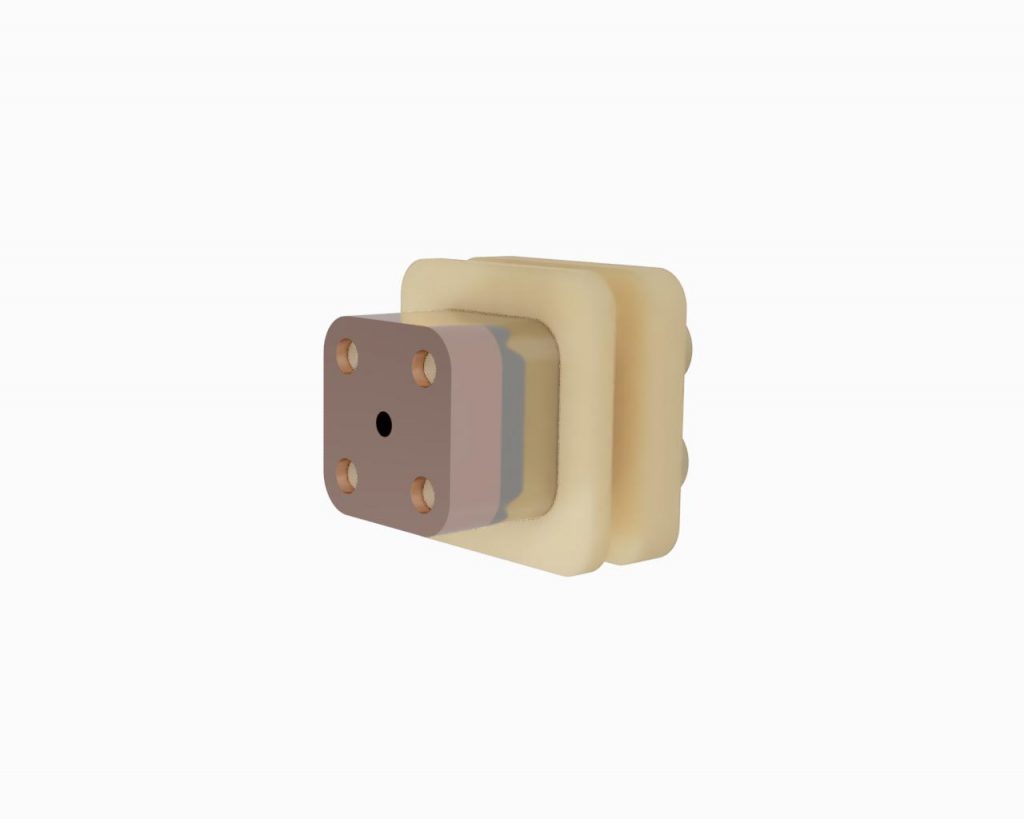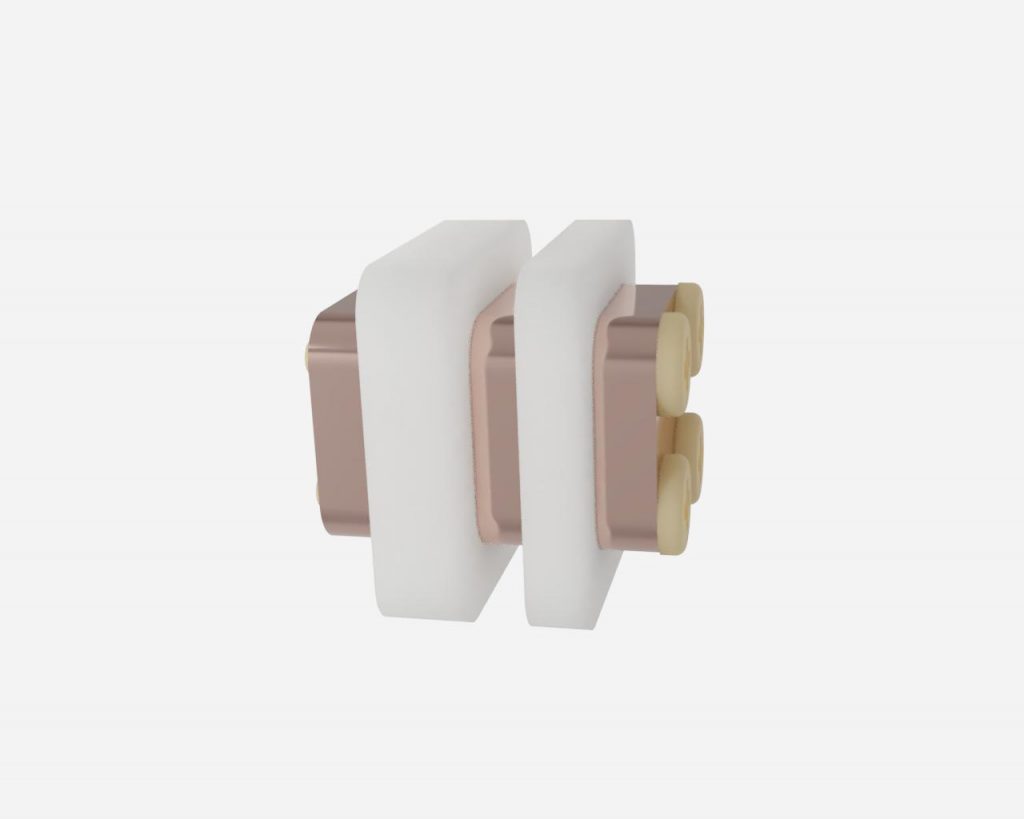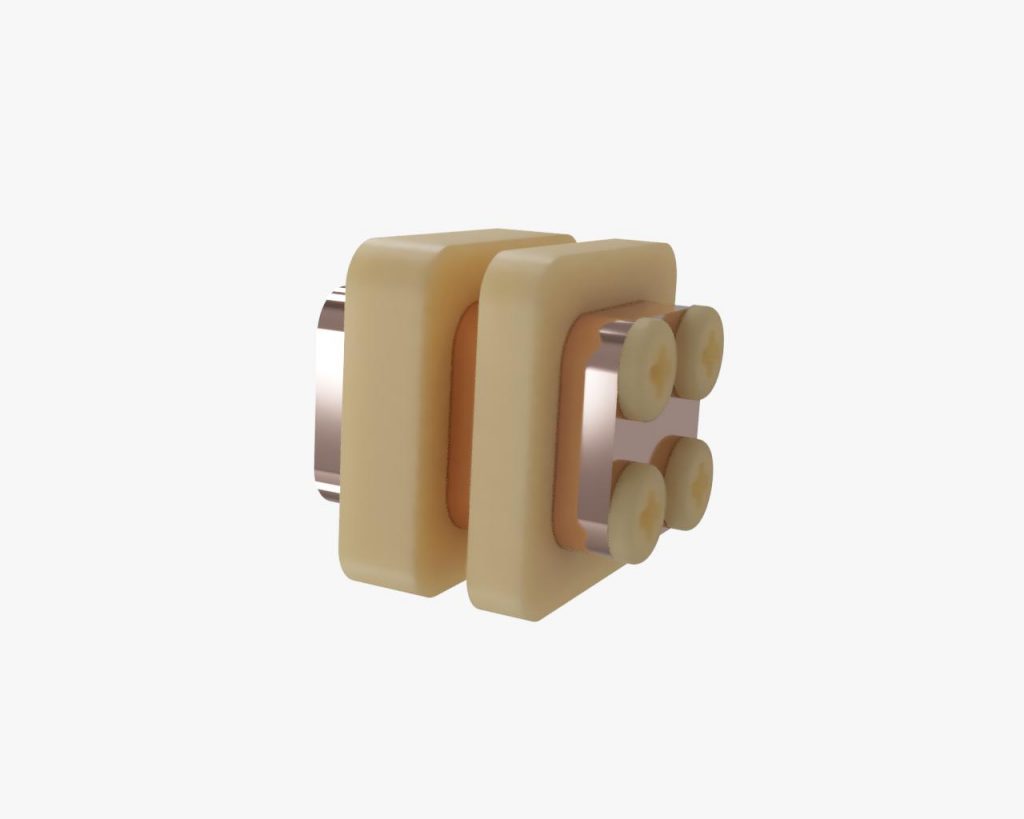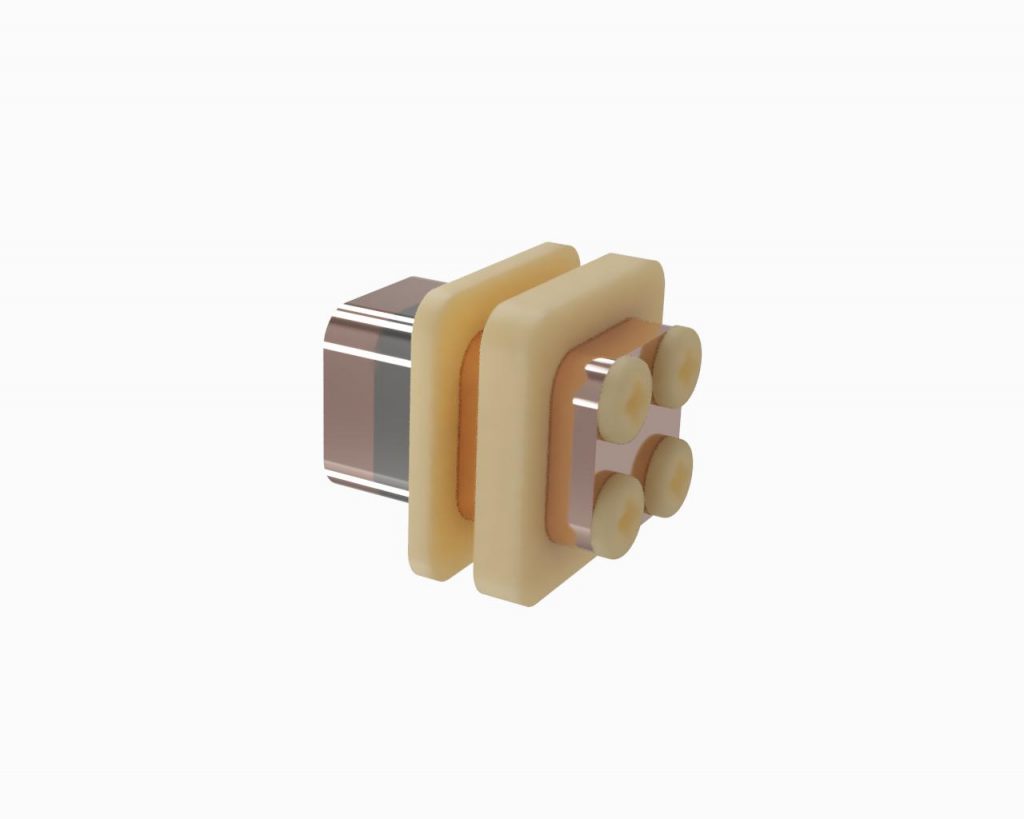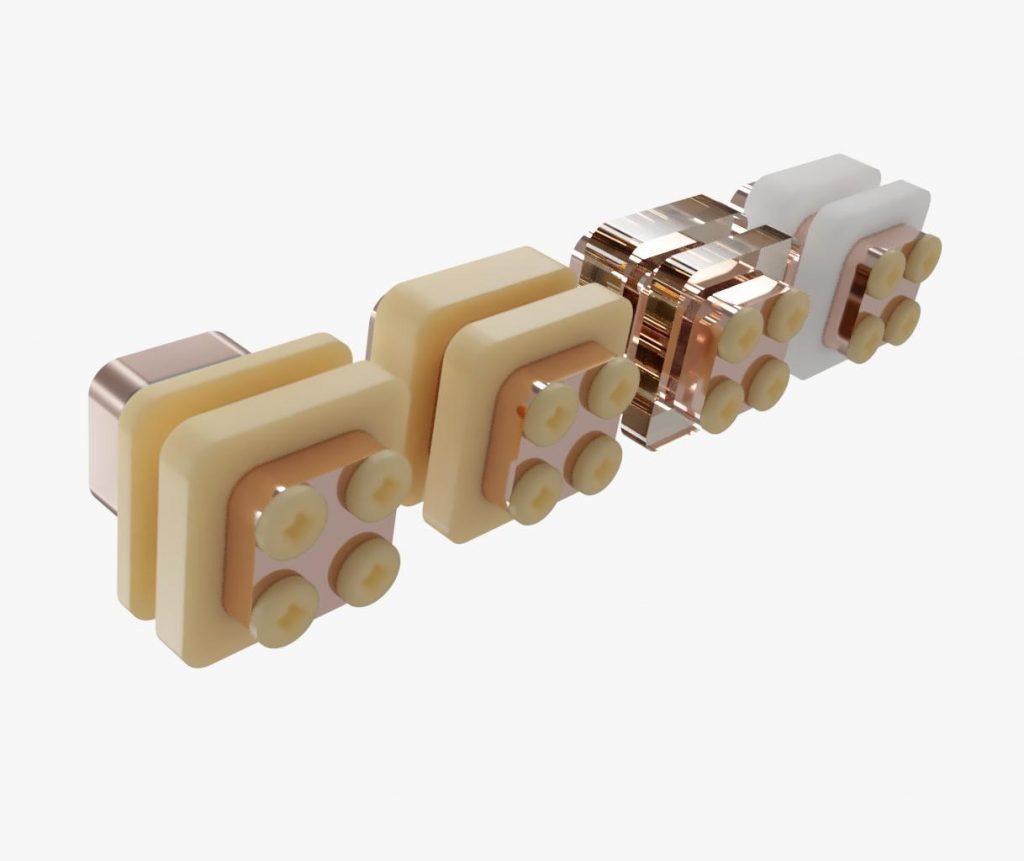Work is now underway for the manufacturing of next generation of the gPPT series thrusters: the AIS-gPPt3-1C series! This group of thrusters boasts several unique features and changes over its predecessor. technical details of the thruster can be found in the AIS-gPPT3-1C Portfolio Page, as well as the AIS-gPPT3-1C Gallery Page. A cross-sectional CAD view can be seen below:
First, available fuel is greatly increased by reducing the fuel bore diameter from 0.15″ down to 0.0625″. In addition, the fuel bore is lengthened from 0.125″ to 0.1875″. As the thruster fires, material ablates, widening the bore. Eventually, enough materiel will ablate that the thruster will no longer operate effectively. Th current limit for the AIS-gPPT2-1C thruster is estimated to be only 500 shots. A narrower and longer starting bore has the advantage of greatly increasing the amount of available fuel, while keeping the form factor tight and small. Total thruster length has only increased by 0.0625″ in the newest iteration.
A second major change with the new thruster design is the incorporation of a magnetic nozzle in the anode. By using a magnetic nozzle, the plasma plume can be focused, and much like a classic converging-diverging nozzle, magnetic nozzles can contribute to performance by increasing plasma acceleration. This is also a very novel concept for PPTs. Other forms of electric propulsion have taken advantage of magnetics in improving performance characteristics, whether increasing plasma density, confining and controlling the plasma, or use as magnetic nozzles for improved thrust. In particular, magnetic nozzles have been shown to be particularly effective with electrothermal-based plasma thrusters. The gPPT series currently operates in the electrothermal regime of acceleration for PPTs. Interestingly enough however, while magnetic nozzles have been tested with thrusters like pulsed vacuum arc thrusters, PPTs have not shared much experimentation in this area, with little in literature on the subject, and currently no commercial model operating in such mode. By using a permanent magnet embedded in the output anode, size can be kept down with improved performance from the magnet, while drawing no extra power. This may also be the first time that such an embedded nozzle has been implemented with such a small sub-joule coaxial electrothermal micro-PPT.
Next, the newest thruster design will explore four different fuels, three of which have most likely never been tested before, or at least data reported, for PPTs – PEEK, Ultem, and a unique low-melting point Bismuth-Tin eutectic fuel, in addition to standard Teflon fuel. The goal of these new fuels will be to primarily explore improved lifetime of this tiny PPT by using materials with higher ablation resistance than standard Teflon. While this will decrease impulse-bit and thrust, specific impulse and lifetime should increase. For such a small thruster with limited fuel and space, lifetime is key to successful implementation for something like a Pocketqube-sized satellite. It is expected that ablation will decrease from Teflon, to Ultem, PEEK, and Bismuth Tin. CAD renders of the new thrusters can be seen below for a side-by-side comparison:
Each of the thrusters has its own unique designation in the series:
- AIS-gPPT3-1C-T – Teflon Fueled
- AIS-gPPT3-1C-U – Ultem Fueled
- AIS-gPPT3-1C-P – PEEK Fueled
- AIS-gPPT3-1C-BT – Bismuth-Tin Fueled
Each of the thrusters are the same dimensionally besides using different fuels, except for the Bismuth-Tin fueled thruster. In order to utilize a metal fuel channel, a small insulating spacer was needed in between the fuel plate, which sits directly below the anode (and thus electrically connected), and the igniter plate (middle electrode plate). For this model, a thin 1/16″ thick PEEK plate was selected for the design, with wider diameter bore to reduce possibility of direct erosion of the insulator channel. Cross sectional views of this slightly modified thruster version can be seen below:
Finally, from a mechanical standpoint, the top anode plate will be tapped with #4-40 threads to directly bolt the thruster together, therefore simplifying assembly and reducing the total number of components.
Once an ideal fuel has been established, and performance both characterized and optimized, the AIS-gPPT3-1C series thrusters will serve as the basis for the next generation thruster, and start converging on an actual, deployable solution. Part of this solution to improve ultimate thruster lifetime will be the use of clusters of these micro-channel PPTs, individually controllable to extend lifetime by the number of thrusters deployed, while still keeping low form factor, cost, and performance. It is expected that a cluster of at least nine of this series thruster could be used for a 1P PocketQube, opening up new potential for low-cost hobbyist level satellites never before realized prior to propulsion.
The new AIS-gPPT3-1C thruster line provides an exciting and potentially game-changing advance in micro electric propulsion for PocketQube-class satellites. With a planned power consumption of only 1W, operating at sub-joule levels, with small, flat form factor and footprint, and improvements to performance such as the use of a magnetic nozzle and new fuels, potentially major advances could be seen in this area of propulsion. In particular, the next round of testing to directly compare performance of these thrusters side-by-side will provide significant and new data not seen before with this new class of PPTs, and hopefully pave the way for advancements towards a space-ready solution!



